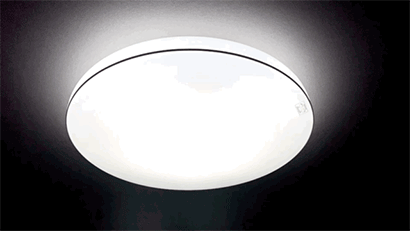
‘Flicker’ refers to the constant change in brightness of light in a display or a lamp, often classified into ‘visible flicker,’ which can be detected by the human eye, and ‘invisible flicker,’ which is not perceived by the human eye.
 |  |
▲ Comparison of flicker in lamps. The one on the right is flickering. (Shot in slow motion at 240FPS)
Flicker occurs when the light source repeatedly turns on and off. An easy way to understand this phenomenon is to see how it happens in a lamp. The typical electrical current provided to a household is the alternating current (AC), which shows an alternating wave going back and forth between positive (+) and negative (-) electrodes. For instance, in a country that uses AC of 60Hz, the current waveform changes between the positive and negative electrodes 60 times in a second.

In the waveform, the current reaches a point where it hits zero (0), instead of the positive or negative electrode. This is when the light turns off, as the current flow momentarily stops. As it is very brief, it may be difficult for the human eye to perceive this, but this is how the cycle of being on and off is repeated.
Similarly in a display, flicker occurs as the pixels turn on and off. Particularly in an LCD, liquid crystals are moved through voltage to control the brightness of the pixels. In this process, brightness is not kept consistent as a part of the voltage is lost. On the other hand, the OLED display has a light-emitting structure within the pixel itself, which removes the need for liquid crystals and eventually eliminates their limitations. Samsung Display recently had its OLED display for laptops certified as being flicker-free,* offering a display that protects the users’ eyes.




